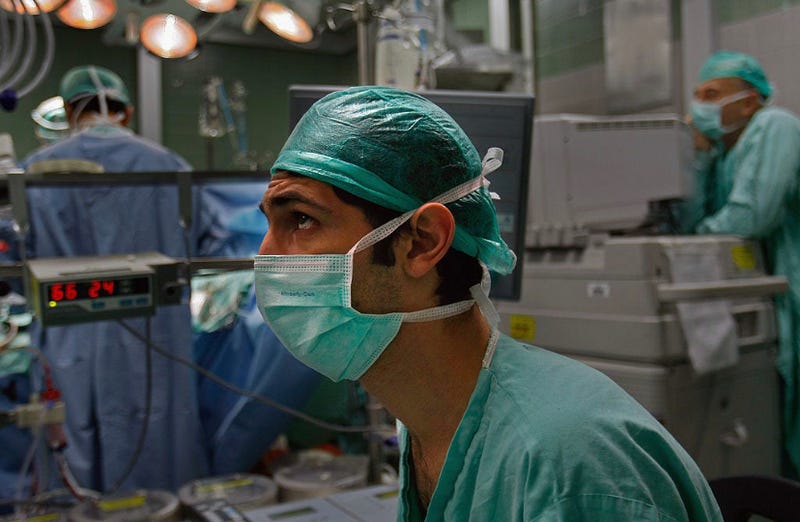
Bypass surgery is one of the most common heart procedures – and it usually involves cracking open a patient’s chest.
But Dr. Tom Nguyen, chief of cardiothoracic surgery at UCSF, told KCBS Radio’s "As Prescribed" on Thursday that minimally invasive surgery can often be a better option.
"A lot of times, when you do the big incisions in the front of the chest, you have a lot of parts of that heart that’s exposed that really doesn’t need to be exposed," he said. "We do a small incision, we expose exactly what we need to expose, and a lot of times we can do with heart still beating, without having to stop heart at all."
Associate Professor of Surgery Dr. Rodrigo de Souza said it can make a huge difference for a patient’s recovery.
"As we do not have to crack anyone’s chest, and you can perform the same surgery that we do using an open chest using just two and a half inches incision, it makes the patient get full recovery in 10 to 15 days only," he explained. "It’s really an advance."
Now, surgeons are looking towards the next advance.
"The next chapter here at UCSF is to do these operations with robotic surgery," Nguyen said. "So, make the incision even smaller, have a lot more control in making those small tiny anastomoses."
"One thing that is really cool on the robot use is that it can eliminate all kind of trembling that surgeon might have," added De Souza, "And it can enhance your visualization because the cameras are in 3D."

